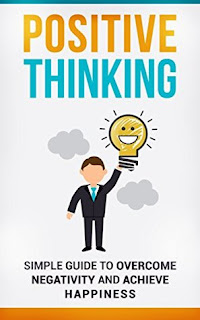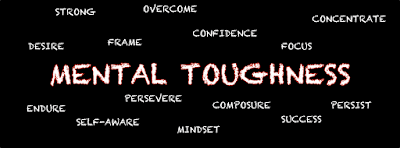Positive thinking: Stop negative self-talk to reduce stress
Positive minds are powerful minds. we'll do and achieve almost anything with a mind that has the willingness and determination to undertake to thereto . Although not everyone gets to know this fact of life, it's probably an honest plan to allow paradigm shift in our method of thinking. you'll not have realized it, but the misfortunes and tragedies in life that you simply simply are experiencing could even be caused by your own actions and thinking.
 |
Positive Thinking: Simple Guide to Overcome Negativity and Achieve Happiness: stop negative thoughts, negative self-talk, and reduce stress and depression using the power of positive thinking |
Understanding positive thinking and self-talk
Positive thinking does not imply that you simply simply keep your head within the sand and ignore life's less pleasant situations. Positive thinking just means you approach unpleasantness during a more positive and productive way. you think that that the only goes to happen, not the worst.
Positive thinking often starts with self-talk. These automatic thoughts are often positive or negative. variety of your self-talk comes from logic and reason. Other self-talk may arise from misconceptions that you simply simply create thanks to lack of knowledge .
The health benefits of positive thinking
Researchers still explore the results of positive thinking and optimism on health. Health benefits that positive thinking may provide include:• Increased lifetime
• Lower rates of depression
• Lower levels of distress
• Greater resistance to the cold
• Better psychological and physical well-being
• Better cardiovascular health and reduced risk of death from disorder
It's unclear why folks that engage in positive thinking experience these health benefits.
Identifying negative thinking
Some common kinds of negative self-talk include:
Filtering. You magnify the negative aspects of a situation and filter all of the positive ones. as an example , you had a superb day at work. You completed your tasks before time and were complimented for doing a speedy and thorough job. That evening, you focus only on your plan to do even more tasks and ditch the compliments you received.
Personalizing. When something bad occurs, you automatically blame yourself. as an example , you hear that an evening out with friends is canceled, and you assume that the change in plans is because nobody wanted to be around you.
Catastrophizing. You automatically anticipate the worst. The drive-through cafe gets your order wrong and you automatically think that the rest of your day are getting to be a disaster.
Polarizing. You see things only as either good or bad. there is no middle ground. you're feeling that you simply simply got to be perfect otherwise you are a complete failure.
Focusing on positive thinking
You can learn to point out negative thinking into positive thinking. the tactic is simple , but it does take time and practice — you're creating a replacement habit, after all. Here are some ways to think and behave during a more positive and optimistic way:
Identify areas to vary . If you'd wish to become more optimistic and interact in additional positive thinking, first identify areas of your life that you simply simply usually think negatively about, whether it's work, your daily commute or a relationship. you'll start small by that concentrate on one area to approach during a more positive way.
Check yourself. If you discover that your thoughts are mainly negative, plan to find the way to place a positive spin on them.
Be hospitable humor. Give yourself permission to smile or laugh, especially during difficult times. Seek humor in everyday happenings. once you'll tease life, you're feeling less stressed.
Follow a healthy lifestyle. Aim to exercise for about half-hour on most days of the week. you'll also break it up into 10-minute chunks of some time during the day. Exercise can positively affect mood and reduce stress.
Surround yourself with positive people. confirm those in your life are positive, supportive people you'll depend on to supply helpful advice and feedback. Negative people may increase your stress level and cause you to doubt your ability to manage stress in healthy ways.
Practice positive self-talk. Start by following one simple rule: Don't say anything to yourself that you simply simply wouldn't tell anyone else. Be gentle and galvanizing with yourself. believe things you're thankful for in your life.
Practicing positive thinking each day
If you tend to possess a negative outlook, don't expect to become an optimist overnight. But with practice, eventually your self-talk will contain less self-criticism and more self-acceptance. you'll also subsided critical of the earth around you.
 |
Positive thinking: Stop negative self-talk to reduce stress |
When your state of mind is typically optimistic, you're better able to handle everyday stress during a more constructive way.
















